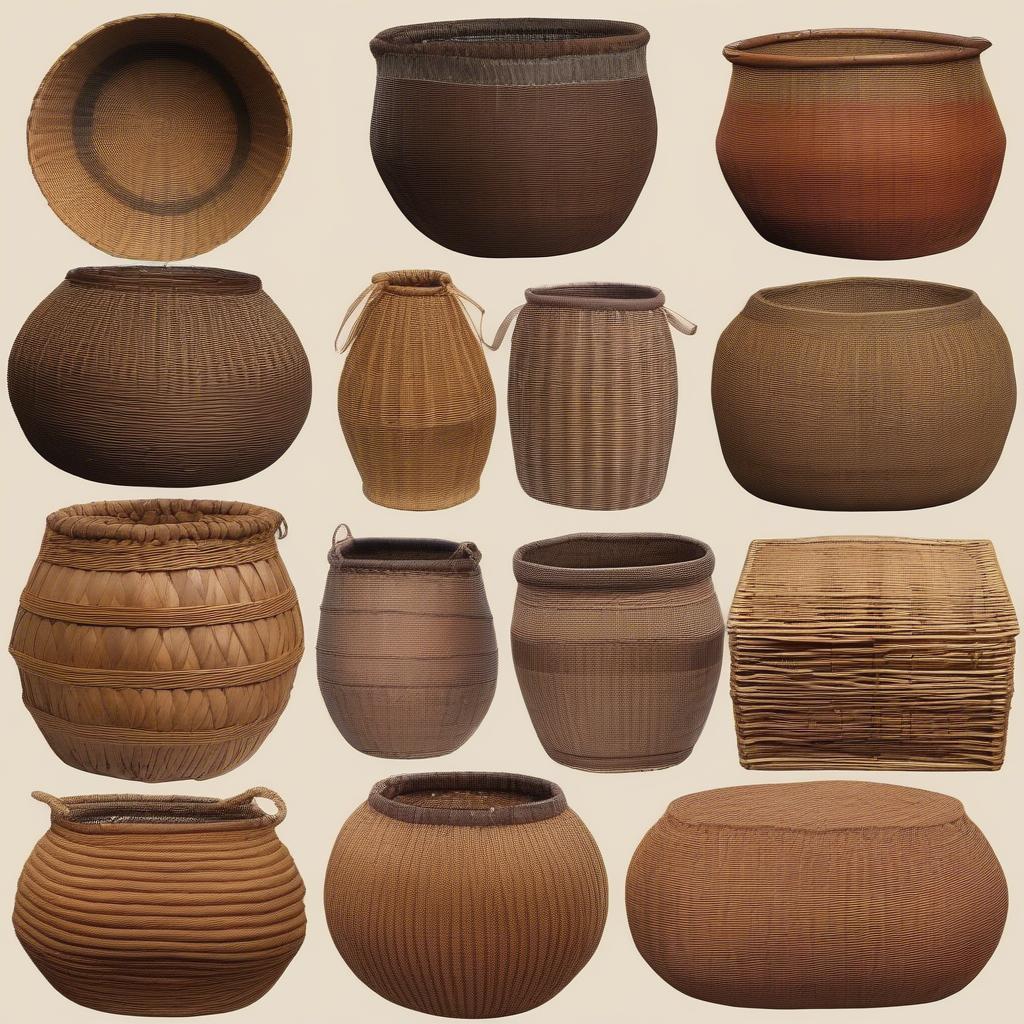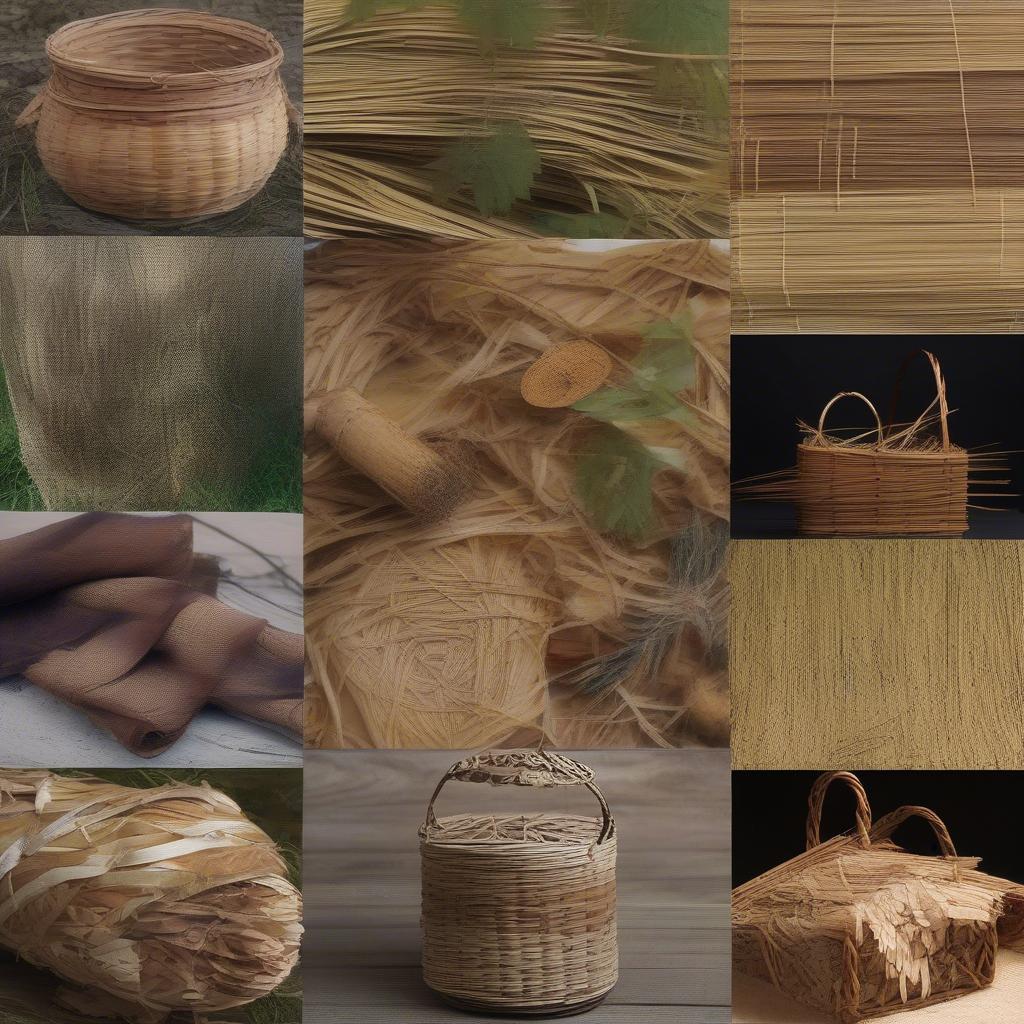Basket Weaving
Unraveling the Secrets of Russian Basket Weaving Techniques
Russian Basket Weaving Techniques offer a unique blend of practicality and artistry, transforming simple materials like birch bark, willow, and pine needles into stunning, functional objects. This article delves into the rich history, diverse materials, and specific methods that define this captivating craft.
A Glimpse into the History of Russian Basket Weaving
Basket weaving in Russia has deep roots, intertwined with the daily lives of its people for centuries. From practical uses in agriculture and household chores to decorative pieces adorning homes, baskets have held a significant place in Russian culture. Early techniques often utilized readily available materials like birch bark and willow, reflecting a deep connection to nature. These early baskets, while simple in design, served vital purposes in storing food, transporting goods, and even cradling infants.  Historical Examples of Russian Basket Weaving Over time, these practical skills evolved, incorporating regional variations and artistic embellishments. The rise of specialized craftspeople led to the development of more intricate designs and the use of diverse materials like pine needles and rye straw. This evolution transformed simple baskets into beautiful works of art, reflecting the unique cultural identity of different regions across Russia.
Historical Examples of Russian Basket Weaving Over time, these practical skills evolved, incorporating regional variations and artistic embellishments. The rise of specialized craftspeople led to the development of more intricate designs and the use of diverse materials like pine needles and rye straw. This evolution transformed simple baskets into beautiful works of art, reflecting the unique cultural identity of different regions across Russia.
Exploring Traditional Russian Basket Weaving Materials
Russian basket weaving utilizes a fascinating array of natural materials, each imparting unique qualities to the finished product. Birch bark, renowned for its durability and water resistance, is a staple in many traditional designs. Its pliable nature allows for intricate patterns and shapes, from simple containers to elaborate boxes.  Variety of Natural Materials in Russian Basket Weaving Willow, another readily available resource, is favored for its flexibility and strength. Its slender branches can be woven into delicate yet sturdy baskets, ideal for a variety of uses. Pine needles, with their fragrant aroma and unique texture, are often incorporated into decorative elements, adding a touch of rustic charm. Rye straw, known for its golden hue and pliable nature, is also a popular choice, particularly in the creation of intricate decorative pieces.
Variety of Natural Materials in Russian Basket Weaving Willow, another readily available resource, is favored for its flexibility and strength. Its slender branches can be woven into delicate yet sturdy baskets, ideal for a variety of uses. Pine needles, with their fragrant aroma and unique texture, are often incorporated into decorative elements, adding a touch of rustic charm. Rye straw, known for its golden hue and pliable nature, is also a popular choice, particularly in the creation of intricate decorative pieces.
Mastering Key Russian Basket Weaving Techniques
Russian basket weaving boasts a rich repertoire of techniques, each contributing to the distinctive character of the finished product. The “twining” method, a fundamental technique, involves interweaving flexible materials like willow or rye straw to create a tight, durable structure. “Plaiting,” another common method, involves braiding multiple strands together, resulting in a more textured and visually appealing surface. More intricate techniques, such as “coiling” and “wickerwork,” allow for the creation of more complex shapes and designs. These techniques often involve the use of specialized tools and require a higher level of skill and precision. The use of natural dyes, derived from plants and berries, adds another layer of artistry to Russian basket weaving, creating vibrant and unique color palettes.
What are some common materials used in Russian basket weaving?
Birch bark, willow, pine needles, and rye straw are frequently used.
Is Russian basket weaving difficult to learn?
While some techniques can be complex, basic techniques are accessible to beginners. how to weave yarn and rope baskets provides a good starting point.
What are some typical Russian basket designs?
Traditional designs often feature geometric patterns, floral motifs, and depictions of animals.
Where can I find resources to learn Russian basket weaving?
Online tutorials, workshops, and books dedicated to basket weaving can provide valuable information. how to weave yarn and rope baskets can also offer insights into basic weaving techniques.
In conclusion, Russian basket weaving techniques represent a rich cultural heritage, blending practical functionality with artistic expression. From the simple elegance of birch bark containers to the intricate beauty of woven rye straw designs, this craft continues to captivate and inspire. Exploring these techniques offers a glimpse into the rich history and artistic traditions of Russia.
If you need any assistance, please contact us at Hanoi, Vietnam or Tech Avenue, Suite 12, San Francisco, CA 94105, USA. We have a 24/7 customer support team.
